April 18th is a day packed with historical significance. It’s like a time machine that takes us on an exciting journey through the past. From battles that changed history to scientific discoveries that reshaped our world, this date has witnessed it all. Ready yourself for a fascinating ride where we’ll meet influential people, explore mind-boggling events, and uncover the secrets behind this extraordinary day.
April 18th: All the Facts and Events That Went Down On This Day in History
You know how some days just feel like they’re soaked in history? April 18th is one of those days. Seriously, a bunch of wild, important, and even heartbreaking things have happened on this date over the years. Let’s dive into some of the biggest moments that make April 18th so interesting:
Think Back in Time: Major Historical Moments
- 1775 – The Midnight Ride: Remember Paul Revere, the guy who rode through the night yelling, “The British are coming!” Yeah, that was on April 18th. This ride essentially lit the fuse for the American Revolution – talk about a high-stakes horseback ride! You can delve deeper into the events of this pivotal day in our section about what happened on April 18, 1775.
- 1906 – San Francisco Gets Rocked: This wasn’t your average earthquake. This massive quake and the fires that followed absolutely devastated San Francisco. We delve deeper into this tragic event and its aftermath in our section dedicated to what happened on April 18, 1906. It’s a reminder of the awesome power of nature and how people can come together to rebuild.
- 1938 – America Steps Up: Remember how the US tried to stay out of things in the early 20th century? Well, that started to change on April 18th, 1938, when the US officially recognized the Second Spanish Republic. This was a sign that America was ready to take a more active role in world affairs.
- 1967 – Tragedy in Space: Space exploration is risky business, and April 18th, 1967, proved it. Soviet cosmonaut Vladimir Komarov lost his life during the Soyuz 1 mission. It was a stark reminder of the bravery of astronauts and the challenges of exploring the cosmos.
Beyond Politics: Other Big Events
- 1857 – A Christmas Carol Comes to Life: Okay, so maybe this one’s a bit more heartwarming. Charles Dickens, the dude who wrote A Christmas Carol, gave his first public reading of the story on April 18th, 1857. It’s kinda cool to think about people back then enjoying the same holiday classic we still love today.
- 1895 – Oscar Wilde Makes ‘Em Laugh: Picture this: London, 1895. Oscar Wilde’s hilarious play, The Importance of Being Earnest, premieres on April 18th. People probably needed a good laugh, and Wilde delivered with his trademark wit.
But Wait, There’s More!
April 18th has seen a ton of other notable events, too many to list here. But to give you an idea:
| Year | Event | Why It Matters |
|---|---|---|
| 1946 | The League of Nations Ends | Made way for the United Nations – a big deal for global cooperation! |
| 1964 | The Beatles Take the World By Storm | Their first world tour kicked off on this date – Beatlemania was officially EVERYWHERE. |
| 1978 | China’s One-Child Policy Begins | Hugely impacted China’s population and society. Still debated today. |
| 1980 | Zimbabwe Celebrates Freedom | Marked the end of British rule and the birth of a nation. |
| 1992 | Hope for Peace in the Middle East | The Oslo Accords, aimed at peace between Israel and Palestine, were signed. |
| 2014 | Ukraine’s Fight for Change | The Maidan Revolution began, leading to major political upheaval. |
The Takeaway?
April 18th might seem like just another day on the calendar, but if you dig a little deeper, you’ll find it’s packed with stories of triumph, disaster, innovation, and everything in between. It’s a reminder that history is happening all around us, every single day. For a deeper dive into the events of other intriguing dates, explore the historical happenings of November 19th and April 7th.
What happened today in history on April 18th?
So, you’re curious about what went down on April 18th throughout history? Well, strap in! From the crowning of kings to cities being rocked to their core, this date has seen it all. Let’s dig a little deeper into some of the big moments that make April 18th so fascinating.
1025: A King is Crowned, A Nation is Born
Imagine the scene: the year is 1025, and Poland is on the verge of a monumental shift. A powerful leader named Bolesław I, often called “the Brave,” is about to be crowned in the city of Gniezno. This wasn’t just any coronation; this was the birth of the Polish kingdom! This event wasn’t just about one man getting a fancy title – it set the stage for centuries of Polish history, culture, and identity.
1506: Laying the First Stone of a Legacy
Let’s fast forward a few centuries to 1506. In Vatican City, a project of truly epic proportions is about to begin. Pope Julius II, known for his ambitious nature, lays the first stone of what will become the awe-inspiring St. Peter’s Basilica. This wasn’t just about building another church; it was about creating a symbol of the Catholic faith that would inspire awe for generations to come. The Basilica’s grandeur, even today, stands as a testament to the incredible artistry and vision of that era.
1775: A Midnight Ride Ignites a Revolution
Hold onto your hats, because we’re about to dive into a tale of bravery and rebellion. In 1775, tensions between colonists and British forces in America were reaching a boiling point. Enter Paul Revere, a silversmith about to become a legend. As British troops moved secretly towards Lexington and Concord, Revere made his now-famous midnight ride, spreading the word that the revolution was about to begin. While some historians debate the details of his ride and its impact, there’s no doubt that Revere’s actions played a crucial role in mobilizing the colonists and sparking the American Revolution.
1906: San Francisco’s Day of Devastation and Resilience
The year 1906 brought unimaginable tragedy to San Francisco. A massive earthquake ripped through the city, leaving a trail of destruction in its wake. Buildings crumbled, fires raged, and thousands were left injured or homeless. The scale of the disaster was almost impossible to comprehend. But, from the ashes of this tragedy, the spirit of the city’s people shone through. San Francisco didn’t just rebuild; it reinvented itself, becoming a testament to human resilience and the enduring power of community.
April 18th: A Microcosm of Human History
As you can see, April 18th is more than just another date on the calendar. It’s a day that’s witnessed pivotal moments of change, courage, and the enduring human spirit. From the birth of nations to the rebuilding after disaster, the events of April 18th remind us that history is a tapestry woven from countless stories of triumph and tragedy. And who knows what incredible event might be added to this list in the years to come?
- What is April 18th’s special day?
So, we’ve been talking about all the cool things that have happened on different days in April, right? Well, buckle up because April 18th is no different! It’s not just another day on the calendar – it’s World Heritage Day!
You might be thinking, “World Heritage Day? What’s that all about?”. Well, imagine a day dedicated to celebrating those incredible places around the world that hold so much history and cultural significance. We’re talking about ancient ruins, breathtaking natural wonders, and everything in between!
This special day was the brainchild of the International Council on Monuments and Sites (ICOMOS) back in 1982. They saw the importance of protecting these irreplaceable treasures, and UNESCO agreed! In 1983, World Heritage Day became officially recognized.
Think of it as a global reminder to appreciate and protect the legacy passed down through generations. It’s a call to action for all of us – to spread awareness about the importance of preserving these sites for future generations. After all, we don’t want these pieces of history to become just stories in a book, do we?
Now, April 18th isn’t just about World Heritage Day. History reveals that this date has seen a whole bunch of fascinating events, from major scientific breakthroughs to the birth and passing of some remarkable people. It’s like a day that has a little bit of everything!
Here’s a quick recap:
- April 18th = World Heritage Day! A day to celebrate and advocate for the preservation of culturally and historically important sites around the world.
- This date has been a witness to a ton of other significant events throughout history. Think groundbreaking discoveries, cultural milestones, you name it!
Which scientist was born on 18 April?
So, we’ve been talking about some pretty amazing folks born on April 18th, and guess what? The brainpower on this date is off the charts! Turns out, April 18th has a knack for bringing brilliant scientific minds into the world.
For one, we’ve got the one and only Albert Einstein, born April 18, 1879. This guy needs no introduction, right? His theories of relativity totally flipped the script on how we understand the universe – space, time, gravity, the whole shebang! We’re talking groundbreaking stuff that earned him a Nobel Prize and cemented his place in scientific history.
But wait, there’s more! April 18th also marks the birthday of Charles Louis Fefferman, a math whiz born in 1949. Now, mathematical analysis might sound a bit intense, but trust me, this guy’s work is a big deal. He even snagged the prestigious Fields Medal, kind of like the Nobel Prize for math, for his incredible contributions.
And hold on, we’re not done yet! We’ve also got Joseph L. Goldstein, born on this very same day in 1940. This guy’s a molecular geneticist, and his research on cholesterol? Well, let’s just say it’s had a huge impact on how we understand and treat heart disease. Yep, another Nobel Prize winner in the house!
Finally, let’s not forget Lars Valerian Ahlfors, a Finnish mathematician born on April 18, 1907. He tackled some seriously complex stuff like Riemann surfaces and complex analysis – don’t ask me to explain those! – and his groundbreaking work earned him, you guessed it, another Fields Medal!
It’s pretty mind-blowing when you think about the sheer brainpower packed into a single day. April 18th, you’ve definitely outdone yourself in the science department! Who knows what other brilliant minds might be born on this day in the future?
What happened on April 18, 2011?
So, we’re talking April 18, 2011… a day that, like most, saw a mix of triumph, loss, and everything in between. Let’s take a closer look at what made this particular Monday stand out:
Boston Marathon Sees Record-Breaking Run:
Over in Boston, the streets were buzzing with the energy of the 115th Boston Marathon. Geoffrey Mutai, all the way from Kenya, stole the show, blazing through the course in a jaw-dropping 2:03:02. This wasn’t just a win; it was a brand-new course record! Not to be outdone, Caroline Kilel, also from Kenya, grabbed the victory in the women’s category, finishing strong with a time of 2:22:36.
Saying Farewell:
April 18th also marked the day the world said goodbye to a few notable figures. William Donald Schaefer, who you might know as the former Governor of Maryland, passed away at the age of 89. The world of golf felt the loss of American golfer Mason Rudolph, who died at 76. And in a tragic turn of events, Nigeria lost one of its rising football stars, Olubayo Adefemi, at the young age of 25.
Music to the Ears:
Meanwhile, on the music scene, Katy Perry’s catchy tune “E.T.” featuring Kanye West, and LMFAO’s infectious “Party Rock Anthem” were dominating the airwaves. These chart-toppers provided the soundtrack to many a gathering that day, and probably still get stuck in people’s heads to this day!
A Day in the Calendar:
Just to put it all in perspective, April 18, 2011, was a Monday, the 108th day of the year if you’re keeping track.
Looking Back, Looking Ahead:
So there you have it, a snapshot of April 18, 2011. It’s interesting to think, isn’t it, how seemingly unrelated events weave together to form the tapestry of a single day in history? From athletic achievements to musical milestones, and the passing of notable figures, each thread contributes to the ongoing story of our world.
And hey, if you’re curious to delve deeper into any of these events, the internet is your oyster! There are tons of articles, videos, and even firsthand accounts out there just waiting to be discovered. Who knows what other fascinating details about April 18, 2011, you might uncover?
What is a fun fact about April 18th?
So, we’ve been over some of the more serious happenings of April 18th, but did you know it’s also a day for some lighthearted fun? Get this – April 18th is International Jugglers Day! That’s right, a whole day dedicated to the mesmerizing art of tossing objects in the air. Whether you’re a seasoned pro or just appreciate a good three-ball cascade, it’s a day to marvel at the skill and coordination it takes to keep those objects dancing.
But wait, there’s more! April 18th also happens to be National Animal Crackers Day. A perfect pairing with the juggling festivities, don’t you think? And as if that wasn’t enough, it’s also National Piñata Day. Who doesn’t love a good whack at a colorful, candy-filled piñata?
So, while April 18th marks some significant historical events, it also reminds us to embrace the joy in simple pleasures – like juggling, animal crackers, and of course, piñatas!
Who was born on 18 April?
So, we’ve been talking about the kind of personalities that come with being born on April 18th, right? Ambitious, a little fiery, the life of the party – sounds pretty exciting, yeah? But let’s put some faces to those Aries traits!
Turns out, a bunch of familiar faces share your birthday if you were born on April 18th. Think David Tennant – yep, the Doctor Who – bringing that Aries energy to the screen. And you’ve got Eric Roberts, known for, well, pretty much everything, and Chloe Bennet from “Agents of S.H.I.E.L.D.” – talk about a trio with some serious presence!
But it’s not just about drama, oh no. April 18th birthdays also seem to bring out the funny bone. Ever heard of a little show called “Conan”? Yeah, Conan O’Brien himself shares this birthday. And then there’s Jeff Dunham, the ventriloquist who can make you laugh without even moving his lips – pure comedic genius!
And hey, let’s not forget the folks making waves in the political sphere. Kayleigh McEnany, a former White House press secretary, was also born on April 18th. And across the pond, we have Michael D. Higgins, the President of Ireland – proof that April 18th folks can be found in all walks of life.
Now, we’ve gotta be careful about putting people in boxes, right? Just because you’re an Aries doesn’t mean you’ve got it all figured out (no offense to any Aries reading this!). Some experts believe that birthdays can give us clues about personality traits, but it’s way more complicated than that.
Think of it like this: being born on April 18th might make you more likely to have certain characteristics, but it’s not a guarantee. Your upbringing, experiences, and a zillion other things play a role too.
So, if you were born on April 18th, maybe this list gives you a little insight into those shared birthday vibes. And if not, hey, it’s still pretty cool to see who you share a birthday with, right?
What happened April 18 1972?
Continuing our journey through history, April 18th, 1972, stands out as a day marked by both tragedy and cultural milestones. Let’s delve deeper into the events that shaped this particular day.
The world held its breath as news broke of a horrific attack during the 1972 Summer Olympics in Munich, Germany. A Palestinian terrorist group, Black September, targeted the Israeli Olympic team, taking athletes and coaches hostage. This act of violence, now infamously known as the Munich Massacre, tragically claimed the lives of eleven Israelis and one German police officer. The world reeled in shock and sorrow, highlighting the vulnerability of even the most celebrated international events to acts of terror. The massacre prompted significant changes in security protocols at future Olympics and sparked an ongoing debate about the balance between security and the spirit of open competition.
Meanwhile, across the English Channel, another kind of wound was being reopened. In Northern Ireland, tensions were already high following the events of “Bloody Sunday” earlier that year, where British soldiers shot and killed unarmed civil rights protesters. On April 18th, the official inquiry into the tragedy, known as the Widgery Report, was published. To the outrage of many, the report largely exonerated the British Army, placing the blame primarily on the protesters. This decision fueled further anger and distrust, deepening the divide in Northern Ireland and solidifying “Bloody Sunday” as a symbol of injustice in the minds of many.
On a lighter note, April 18th also saw the return of a powerful story to the Broadway stage. A revival of “Lost in the Stars,” the poignant musical adaptation of Alan Paton’s novel “Cry, the Beloved Country,” opened at the Imperial Theater. This timely production, featuring music by Kurt Weill and lyrics by Maxwell Anderson, explored themes of racial injustice and apartheid in South Africa, issues that resonated deeply with audiences during the continuing Civil Rights Movement in the United States. “Lost in the Stars” served as a reminder of the power of art to illuminate social issues and provoke dialogue about important but often uncomfortable truths.
Even though we are decades removed from these events, their impact continues to resonate. The Munich Massacre serves as a stark reminder of the human capacity for violence and the ever-present threat of terrorism on the world stage. The legacy of the Widgery Report and the ongoing quest for accountability in Northern Ireland demonstrate the complexities of historical inquiry and the enduring impact of unresolved conflicts. And the revival of “Lost in the Stars” highlights the role of art in reflecting and challenging societal norms, sparking conversations that remain relevant today.
While we have gained a broader understanding of these events over time, it’s crucial to remember that historical interpretation is an ongoing process. New evidence may emerge, and perspectives can shift, leading to a more nuanced understanding of the past.
What happened on April 18, 1906?
As we were discussing, the morning of April 18, 1906, dawned like any other in San Francisco. Little did the city’s residents know that they were about to face one of the most powerful earthquakes in American history. At precisely 5:12 a.m., the ground beneath them began to shake violently. This wasn’t just a tremor; it was a full-blown earthquake, registering a massive 7.9 on the Richter scale.
The epicenter of this seismic beast wasn’t directly under the city but lurked just off the coast, about two miles out in the Pacific Ocean. Even from there, its power was undeniable. Imagine feeling the earth move not just in San Francisco, but as far north as Oregon and all the way down south to Los Angeles! That’s how far-reaching the tremors were.
While the initial quake lasted less than a minute, the aftermath was catastrophic. Buildings crumbled like sandcastles, streets buckled, and fires erupted throughout the city, fueled by broken gas lines and piles of debris. These weren’t just small, contained fires either. They raged out of control, turning entire neighborhoods into infernos.
Imagine the terror of those who survived the initial quake only to find themselves trapped in a city engulfed in flames. Over 28,000 buildings were swallowed by the inferno, leaving more than half of San Francisco’s population homeless. The official death toll from the earthquake and the subsequent fires reached over 3,000, although some experts believe the actual number might be even higher.
The 1906 San Francisco earthquake wasn’t just a disaster; it was a turning point. It forced the city to rebuild, and rebuild they did. From the ashes rose a more modern San Francisco, a testament to the resilience of the human spirit. However, the scars of that day remain, a reminder of the awesome power nature can unleash.
Some lingering questions and areas of ongoing research:
- The true death toll: While the official number stands at over 3,000, some historians believe the actual number may never be known due to the destruction of records and the chaos of the event.
- The role of fire: The fires that followed the earthquake caused even greater devastation. Researchers continue to study the factors that led to the rapid spread of the fire and the lessons learned for urban planning and disaster preparedness.
- Seismic activity on the San Andreas Fault: The 1906 earthquake provided valuable data about the San Andreas Fault. Scientists study this data to better understand earthquake prediction and mitigation.
It’s important to remember that our understanding of the 1906 earthquake continues to evolve as new research emerges. The event serves as a reminder of the importance of studying past disasters to prepare for the future.
What happened on April 18th 1981?
Now, April 18th, 1981, wasn’t just about any old baseball game. Imagine this: the Pawtucket Red Sox and the Rochester Red Wings locked in a battle of wills on the diamond. This wasn’t your average nine innings and head home kind of game, no sir. This game stretched on, and on, and on, becoming the longest professional baseball game ever played! Folks were glued to their seats (or maybe sneaking in a nap during the lulls) for a whopping 33 innings! It was a true test of endurance, for both the players and the fans.
But hold on, because April 18th had more in store! This date also marked the arrival of two individuals who would go on to make their own marks on the world. Over in the US, Brian Buscher, destined to swing a mean bat as an MLB third baseman, was born. Meanwhile, across the pond, Serbia welcomed Milan Jovanović, a man who would capture hearts and minds as an actor and politician.
Sadly, April 18th, 1981, wasn’t without its share of sorrow. The world of literature bid farewell to James H. Schmitz, a master storyteller who transported readers to distant galaxies with his captivating science fiction tales. His imagination and way with words ensured his place as a legend in the genre.
So you see, April 18th, 1981, was a day of highs and lows, of triumph and loss, a day that reminded us that even amidst the thrill of a home run or the birth of a star, the world keeps spinning, stories continue to unfold, and legacies, like the echoes of a 33-inning game, live on.
What Happened on April 18, 1775?
Things were already pretty tense between the American colonists and the British, but on April 18, 1775, things really boiled over. The British had gotten word that the colonists were stashing weapons in Concord, Massachusetts, and they also wanted to try and arrest some of the Patriot leaders who were causing a stir. So, they decided to send troops to Concord to take care of business. However, the colonists had a secret weapon of their own: Paul Revere.
Paul Revere, along with William Dawes, caught wind of the British plan and knew they had to warn the colonists. In what would become a legendary story, Revere set off on his now-famous midnight ride, spreading the word far and wide. Dawes also played a crucial role, even though his ride doesn’t get as much attention. Thanks to their efforts, the news traveled quickly and the colonial militias were ready and waiting for the British.
When the British troops arrived in Lexington, which was on their way to Concord, they found themselves facing a determined group of Minutemen. A fight broke out, and shots were fired – these are widely considered to be the very first shots of the American Revolutionary War.
The British continued their march to Concord, but they ran into even more trouble there. The colonists were ready for them at the North Bridge, and the fighting that took place, known as the Battle of Concord, forced the British to retreat. The militia didn’t let up, though, and they harassed the British all the way back to Boston. By the end of the day, the British had suffered heavy losses.
The events of April 18, 1775, were a turning point in the colonies’ relationship with Great Britain. The colonists had shown they were willing to fight for their freedom, and the battles of Lexington and Concord made it clear that this was just the beginning of a long and bloody conflict.
Key Takeaways:
- April 18, 1775, is a hugely important date in American history. It’s considered the day the American Revolution really kicked off.
- Paul Revere’s midnight ride is one of the most famous events in American history, and it played a big role in making sure the colonists were ready for the British.
- The battles of Lexington and Concord were the first real fights of the Revolutionary War and showed everyone just how determined the colonists were.
- The fact that the British were forced to retreat from Lexington proved just how strong the colonists’ resistance to British rule really was.
Things to Consider:
- While Paul Revere’s ride is very famous, it’s important to remember that he wasn’t the only rider spreading the alarm. William Dawes and others also played important roles.
- Historians are still learning about the events of April 18, 1775. New evidence and research are constantly shedding light on what happened that day.
- The American Revolution was a complex event with many causes. The events of April 18, 1775, were just one part of a much larger story.
Further Exploration:
- Read more about Paul Revere, William Dawes, and the other riders who warned the colonists.
- Learn about the battles of Lexington and Concord in more detail. What were the strategies of each side? What were the key turning points?
- Explore the causes of the American Revolution. What were the main grievances of the colonists? What were the British perspectives?
- Unlock Filipino Culture: A Deep Dive into Traditions and Practices - April 23, 2025
- Unlock Spanish Culture: Insights & Opportunities Now - April 23, 2025
- White Spirit Uses & Substitutes: A Deep Dive for Pros & DIYers - April 23, 2025
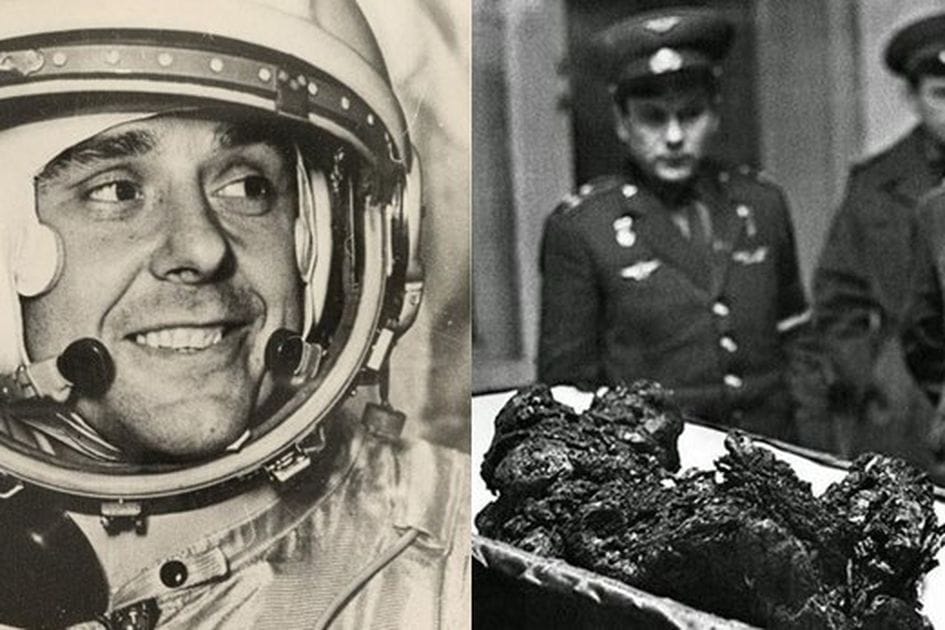
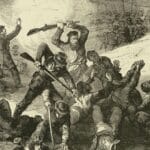

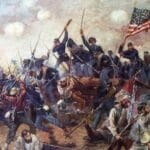
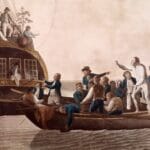
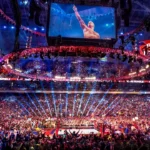
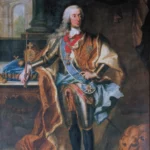










1 thought on “A Journey Through Time: Exploring the Notable Events of April 18th”
Comments are closed.